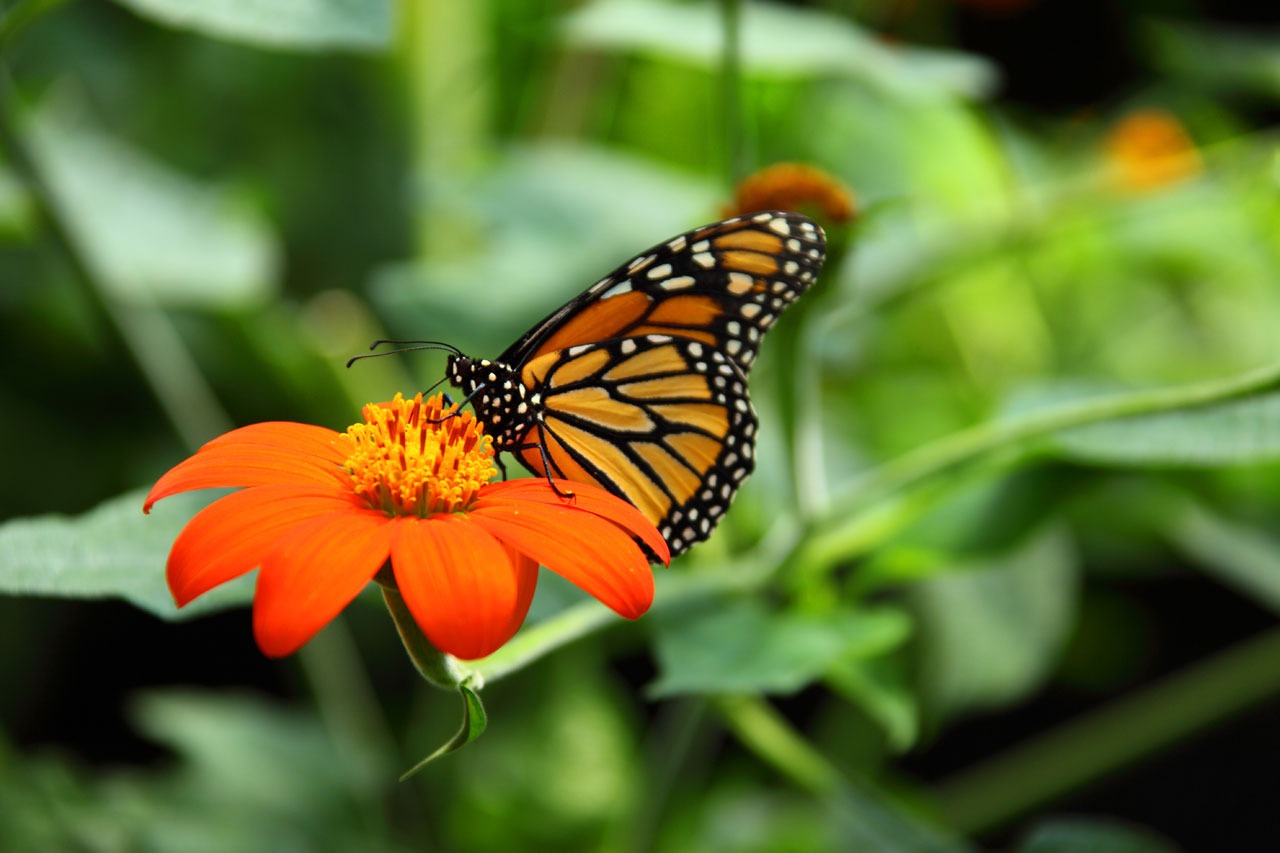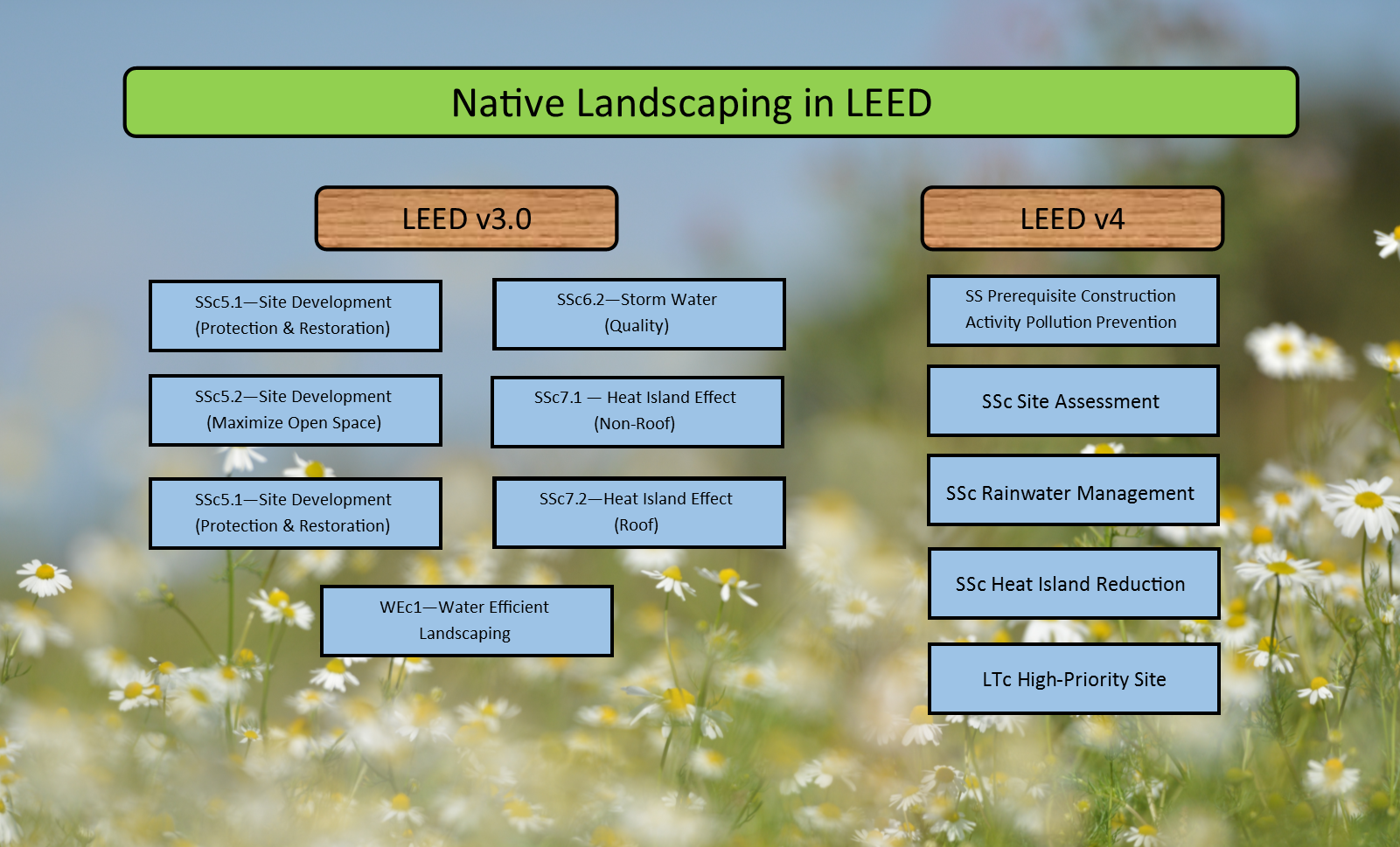Native landscaping is a simple way to reincorporate native grasses, flowers, shrubs and trees into the landscape. Native flowers blossom throughout the season and attract butterflies and hummingbirds. Hardy native grasses provide golden color for fall and winter appeal.
Once established, native plants are easy to maintain because they are adapted to their region’s temperatures and rainfall patterns. They are also resistant to local pests and disease. Native plants reduce soil erosion, build soil structure, and infiltrate rainfall.
Non-native, “exotic” species of plants, which have been introduced directly or indirectly by humans, often require extensive care in the form of water, fertilizer, pesticides, and maintenance. These non-native plants can also be invasive which grow and spread aggressively to the point of displacing other plants. They are hard to control and often disrupt ecosystems and reduce biodiversity.
In the past, the trend in landscape planting for new sites has been to use the same few plants repeatedly. Horticulturists identified shrubs and trees that could survive the harsh conditions of the heat island effect and limited root space typically found in a parking lot. These lists were commonly referenced by landscape architects, site designers, and civil planners – quickly becoming standardized. Before long, landscaping for new sites in Oregon was identical to landscaping for new sites in Pennsylvania without a regard for regional variation. Little diversity was found in the plantings, and typically the same 1 or 2 trees and shrubs were repeated throughout the site.
All plants offer benefits such as shading, air filtration, and aesthetics, but native and adapted plants are more likely to do well while also simultaneously enhancing ecosystem stability, providing habitat, and requiring minimal attention. Native plants are an integral part of local ecosystems and flourish in their specific conditions without soil modifications, chemicals, or excessive water.
A LEED building is more than just a built structure, the surrounding site and landscape also play a significant role in a projects certification. LEED encourages native landscaping across its rating system by providing credits for preserving high-quality native ecosystems or, for previously developed sites, restoring native plants to improve the viability of ecological communities, manage and filter rainwater, and fulfill other ecosystem functions.
By embracing native landscaping, LEED opened the door to reevaluating landscape design and, as a wider range of site designers became aware of the benefits of native plants, the built landscapes started to change. Using a variety of species means plants will be more resistant to diseases, reduce mortality, and can withstand the climate extremes of the locality. Native plants also provide habitat and food for native species – even in highly urbanized areas insects, such a bees and butterflies, birds, and other creatures are drawn to their food sources. Finally, native plants enhance the beauty of the site and help reduce irrigation demands.
Consider maximizing the use of native and adaptive plants on your next building project. In Pennsylvania alone, there are over 2,100 native plant species. Many native grasses, ferns, shrubs, trees, and wildflowers are listed in this Native Plant Database (filter results for Pennsylvania). For some excellent examples of how native plants can be beautifully incorporated into a variety of landscapes, check out the Lady Bird Johnson Wildflower Center, the North American Native Plant Society, state agencies, and local cooperative extension service offices and others.


